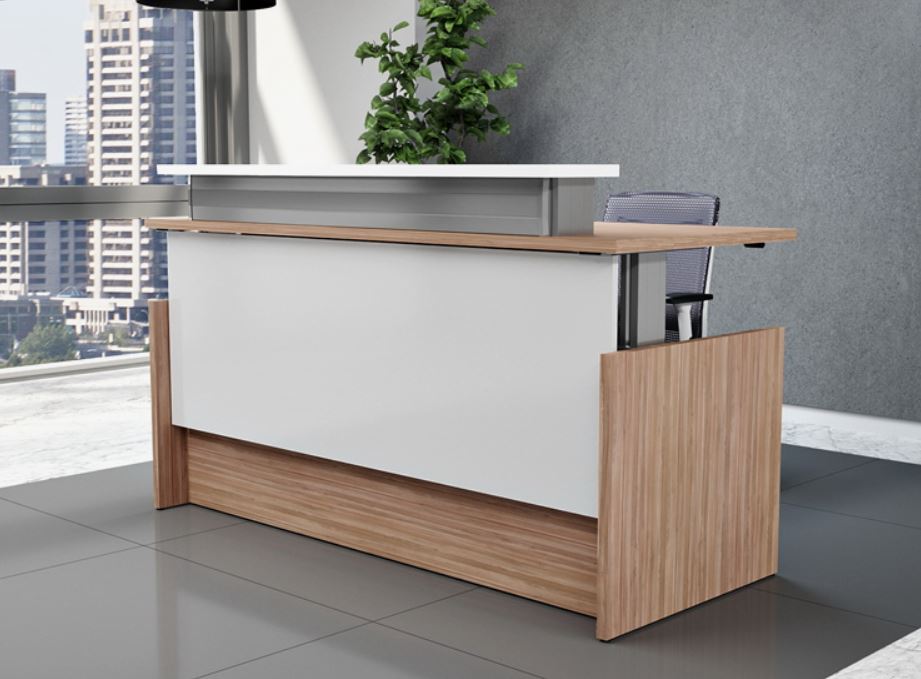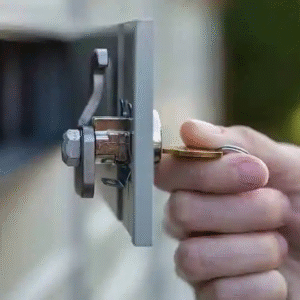
The reception area is the face of any business, and the reception table is its centerpiece. The way a reception table is designed plays a crucial role in how a client, guest, or partner perceives a company the moment they step in. A functional and stylish reception table design blends aesthetic appeal with utility, offering not just a space for communication but also reinforcing brand identity. Whether for a corporate office, clinic, hotel, or showroom, the importance of a well-thought-out design cannot be overstated. Choosing the right reception table involves considerations such as layout, available space, brand personality, and user requirements—all of which contribute to making that lasting first impression.
Modern Reception Table Design Trends You Should Know
In today’s workspace environment, modern reception table design has evolved from bulky wooden counters to sleek, ergonomic structures that reflect a company’s professionalism and creative spirit. Glass-topped tables with LED backlighting, geometric wood panels, or minimalistic matte finishes are now popular choices. Designs that incorporate clean lines, neutral tones, and subtle textures create a welcoming yet sophisticated ambiance. Additionally, modern tables often feature integrated technology like charging ports, cable management systems, and digital displays. Many designers are also including modular features to accommodate growing teams or changing office dynamics. These reception tables not only look impressive but are also functional, making the day-to-day interactions smoother and more efficient for the reception staff.
Balancing Aesthetics and Functionality in Reception Table Design
While it is easy to be captivated by the aesthetics, the functionality of a reception table design must never be compromised. Reception staff often deal with multiple tasks—answering phones, checking in visitors, handling parcels, and coordinating with other departments. Therefore, the design must cater to efficiency and comfort. A well-designed table should include enough storage space, a comfortable working height, privacy partitions, and room for essential equipment like computers and telephones. Additionally, incorporating ergonomic elements like under-desk legroom and appropriate chair heights ensures staff comfort during long working hours. A reception table that balances form and function will streamline front-desk operations while still elevating the office’s visual appeal.
Space Optimization in Reception Table Design for Small and Large Offices
Not every office has a grand lobby, and that’s where smart reception table design comes into play. For compact areas, L-shaped or curved reception desks make efficient use of limited space while maintaining a professional look. These designs allow movement flexibility and reduce clutter, ensuring that even a small reception zone looks tidy and intentional. On the other hand, for larger areas, a spacious U-shaped or custom-built reception table adds to the grandeur. These large tables may also include display shelves, visitor counters, and extra storage options to meet the needs of high-footfall environments. It’s essential to tailor the design according to the space and traffic of the reception area to maintain harmony and flow.
Material and Finish Choices That Enhance Reception Table Design
Material selection is a core aspect of reception table design, significantly impacting both durability and visual appeal. Wooden tables provide a classic and warm feel, while glass and metal combinations offer a contemporary and high-end touch. Laminate and engineered wood are practical choices for businesses seeking cost-effective yet stylish options. High-gloss finishes exude a sense of luxury, while matte and textured surfaces create a more subtle and grounded look. It’s also important to consider the wear and tear of materials, especially in high-traffic offices. Scratch-resistant surfaces, anti-fingerprint coatings, and moisture-resistant laminates enhance the longevity and maintenance of the reception table without compromising on aesthetics.
Customization Options in Reception Table Design for Brand Identity
Every company has a unique identity, and the reception table design is a perfect opportunity to reflect it. Customizing the reception desk with brand colors, logos, or signature design elements can reinforce brand recognition and make visitors feel more connected. For instance, a tech company might opt for a minimalist table with digital integrations and backlit panels, while a law firm may prefer a more formal wooden structure with a traditional finish. Lighting also plays a big role in customization—LED strips, ambient lighting, or under-table glows can enhance visual appeal and set the tone. Custom reception desks are not just about style—they help create an immersive and memorable brand experience right from the entrance.
Incorporating Technology into Modern Reception Table Design
Incorporating technology is no longer optional in today’s reception table design. Offices are becoming increasingly digital, and the reception area must evolve accordingly. Integration of digital sign-in systems, facial recognition units, and touchscreen directories provides a tech-forward impression to visitors. Built-in power sockets, USB hubs, and wireless charging stations cater to the needs of guests and staff alike. For corporate environments, hidden compartments for networking hardware or smart lighting controls can also be part of the design. Including these elements ensures the reception table not only looks modern but also aligns with the operational demands of today’s workplace.
Sustainability and Eco-Friendly Reception Table Design Solutions
As sustainability becomes a priority, many businesses are opting for eco-conscious reception table design. Using FSC-certified wood, reclaimed materials, or low-emission laminates helps reduce environmental impact. Non-toxic finishes, recyclable components, and energy-efficient lighting solutions further enhance the green credentials of your reception area. In addition, some businesses go the extra mile by choosing local craftsmen and eco-friendly supply chains. Not only does this align with global sustainability trends, but it also resonates positively with environmentally conscious visitors and stakeholders. An eco-friendly reception table doesn’t just look good—it tells a responsible and forward-thinking story.
Reception Table Design Mistakes to Avoid
While planning a reception table design, certain common mistakes can reduce its effectiveness. Choosing oversized desks for small areas or undersized ones for large lobbies can throw off spatial balance. Ignoring ergonomics or using materials that are hard to maintain may impact daily operations. A cluttered surface or lack of storage solutions can create a messy impression. Similarly, overlooking branding or skimping on lighting can make the space feel impersonal. Businesses should aim for harmony—where every design element, from dimensions and materials to layout and accessories, contributes to a smooth and welcoming reception experience.
Conclusion: The Right Reception Table Design Speaks Volumes
In summary, reception table design is more than just furniture—it’s a strategic tool for brand presentation, visitor management, and workspace functionality. A well-crafted design leaves a lasting impression, sets the tone for business interactions, and reflects the company’s values and professionalism. Whether you are designing a new office or revamping your existing space, investing in the right reception table can significantly elevate your business environment. For top-tier furniture options and expert guidance, office furniture supplier philippines offers an excellent selection of reception desks tailored to fit various styles, budgets, and space requirements.





